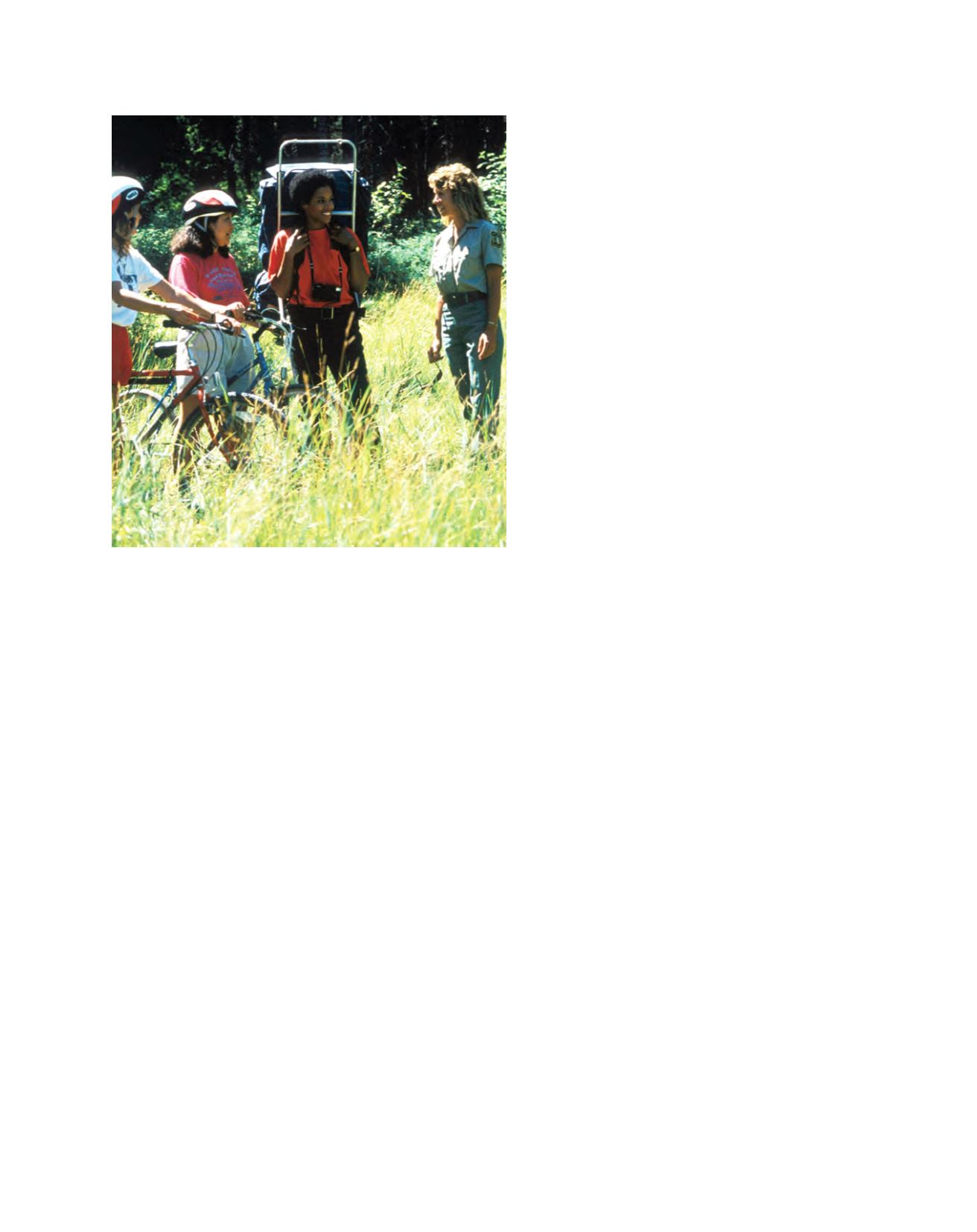

[
] 260
Division of Forestry established in the US Department
of Agriculture (USDA) in 1876, the Forest Service
was founded in 1905 to manage the Federal forest
reserves, which became the national forests and grass-
lands, intended partly to model sustainable forestry.
The agency also works through the States to provide
private landowners with technical and financial assist-
ance for sustainable forest management. In addition,
the USDA Forest Service makes conservation-related
science and information available, including more
than 30,000 publications online. Across the United
States, the cooperative foundations for sustainable
forestry are strong, and the US forest estate has stabi-
lized at about 300 million hectares.
Benefits from forests
Until the mid-19th century, almost all of the nation’s
energy came from wood. More than 60 per cent of
the population lived in rural areas, and many people
depended directly or indirectly on forests for their
livelihoods. Wood and forests were vital in almost
every sector of the economy, including agriculture,
construction, shipbuilding, mining, manufacturing and
transportation. Without railroad ties and trestles, for
example, the United States might never have entered
the industrial age.
Forests remain a vital industrial resource. Eighty
per cent of the US population now lives in metro-
politan areas, consuming three times more wood per
capita than the global average, but most of the need
is domestically met: the United States remains by far
the world’s largest producer of wood. The Southern
States alone, from Virginia to Texas, constitute the
world’s single largest wood-producing region. In 2009,
forest-related industries in the South accounted for the
equivalent of about 350,000 full-time jobs, and the
value of wood products from the region was more than
US$115 billion.
Nevertheless, the greatest forest-related contribution to
the US economy comes from outdoor recreation. A study
in 2006 found that the active outdoor industry on all lands
nationwide contributed about US$730 billion annually
to the US economy, supporting around 6.5 million jobs.
Forests also provide an array of ecosystem services, such
as protecting and purifying drinking water. US citizens
get more than half of their water from sources that origi-
nate in forests. The annual value of the water from the
National Forest System alone has been estimated at more
than US$7.2 billion for both instream and offstream uses.
Challenges ahead
Today, US forest resources are at grave and growing
risk. In response to rampant fires, conservation agencies
in the last century cooperated to suppress wildland fire.
They effectively excluded fire from many landscapes
where frequent low-severity fires had maintained open
mosaics of forest, woodland and grassland, result-
ing in closed forests prone to catastrophic fires. Since
the 1990s, the United States has reversed much of the
The conservation movement
In 1891, concerned about timber shortages, floods, erosion and
siltation resulting from deforestation, the US Congress authorized
a system of Federal forest reserves. In 1903, President Theodore
Roosevelt established the first national wildlife refuge to protect
vanishing habitat for birds and other wildlife. Growing public
demand for outdoor recreation and heritage protection gave birth
to the National Park System in 1916. Lands in the public domain
that never passed into private ownership became a system of public
lands administered by the Bureau of Land Management, founded
in 1946. Smaller Federal land systems are administered by the US
Departments of Commerce, Defense and Energy and many forest
lands, especially in the West, are owned by American Indian tribes.
More than a third of America’s forests are on tribal or Federal land;
another tenth are administered by State, county and municipal
governments.
US citizens have generally embraced conservation, including the
need for protected areas. Large, flourishing national and State forests
are scattered across the East on lands once devastated by logging,
fires, floods and erosion. In the West, public lands protect some of
the world’s oldest and largest trees – giant sequoias and redwoods, as
well as cathedral-like rainforests dominated by Douglas firs and western
hemlocks. In biodiversity hotspots such as California and the southern
Appalachians, public lands provide key refuge for rare and sensitive
species. The United States also has 44 million hectares of wilderness
areas untouched by civilization.
But by far the largest proportion of US forest land – 56 per cent
– is in private hands; in the East, it is 83 per cent. Responsibility
for regulating private forest management lies with the States,
whose forestry laws vary widely. Still, the role of the USDA
Forest Service is vital in forestry nationwide. With roots in the
Wallowa Whitman National Forest, Oregon
Image: USDA Forest Service
















